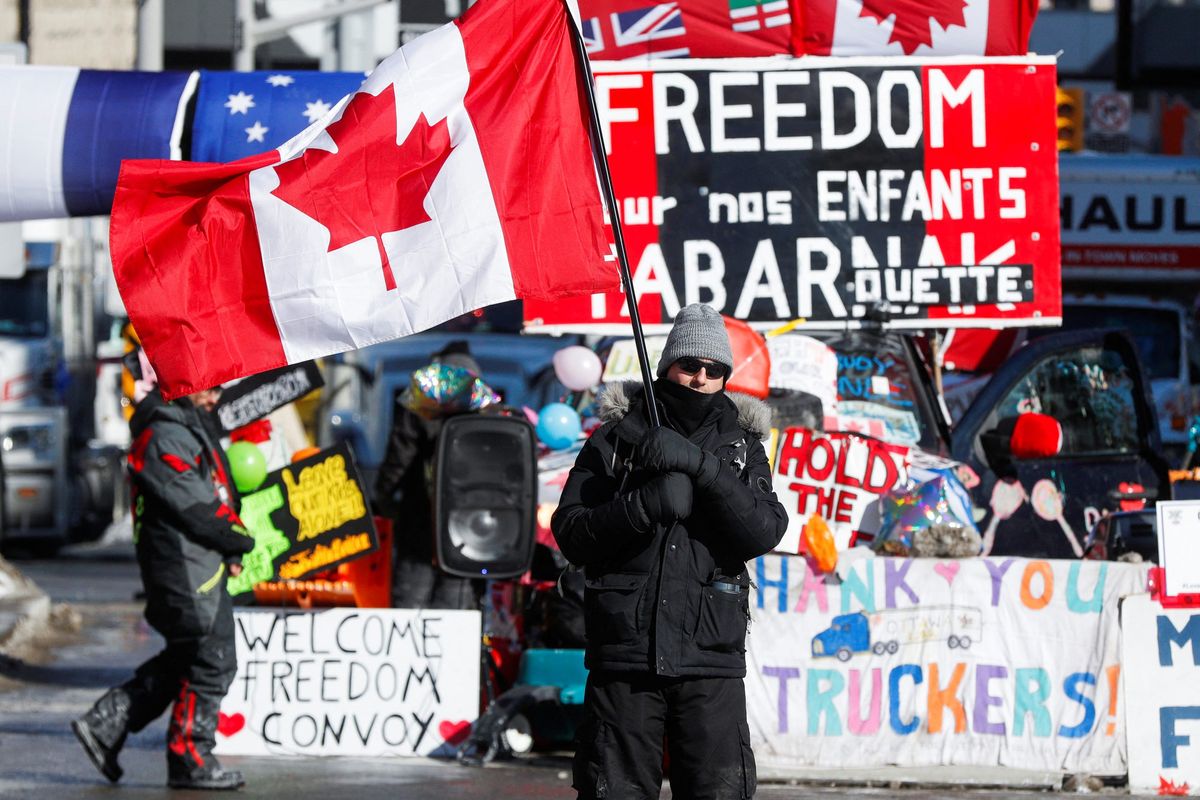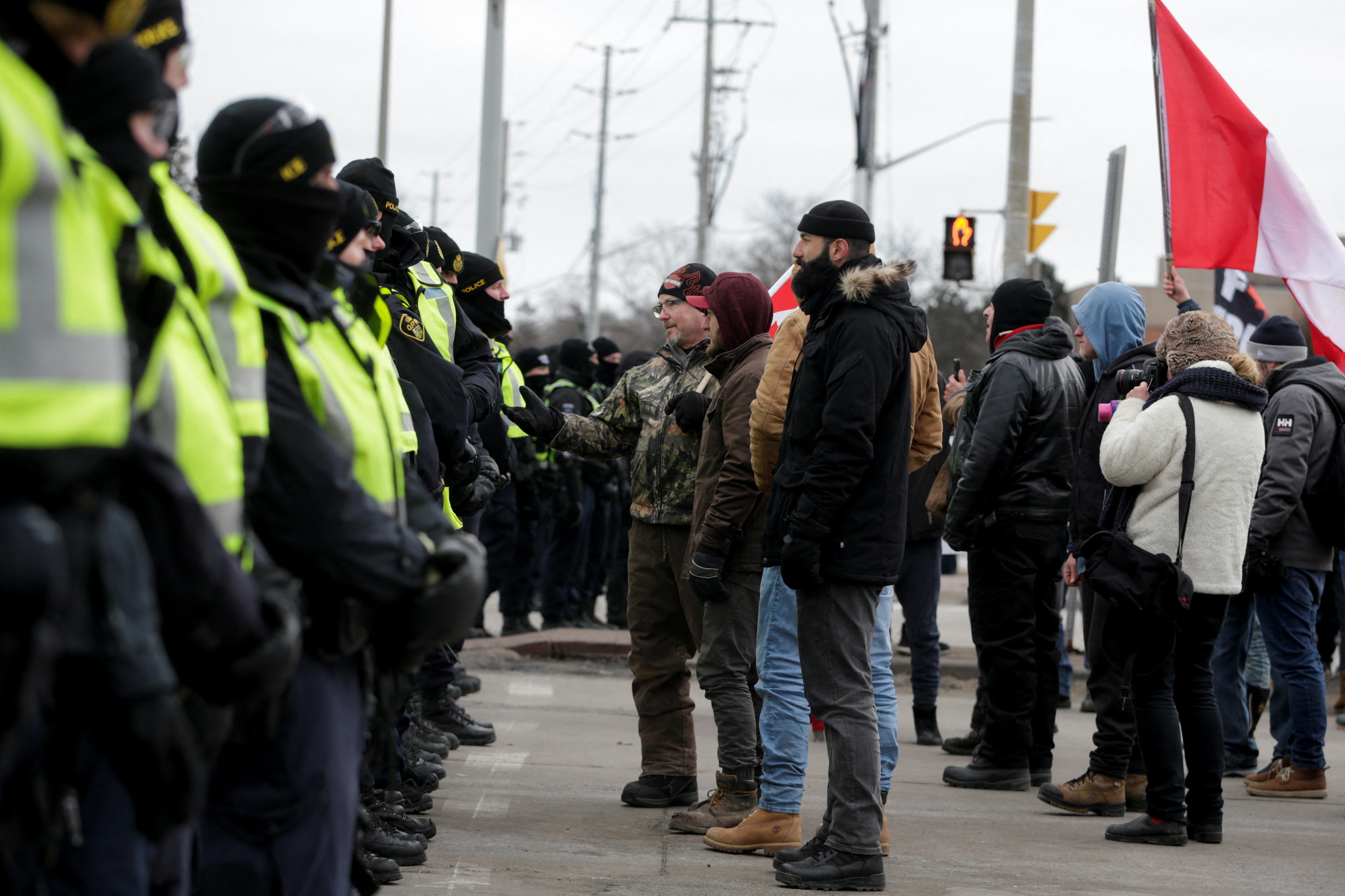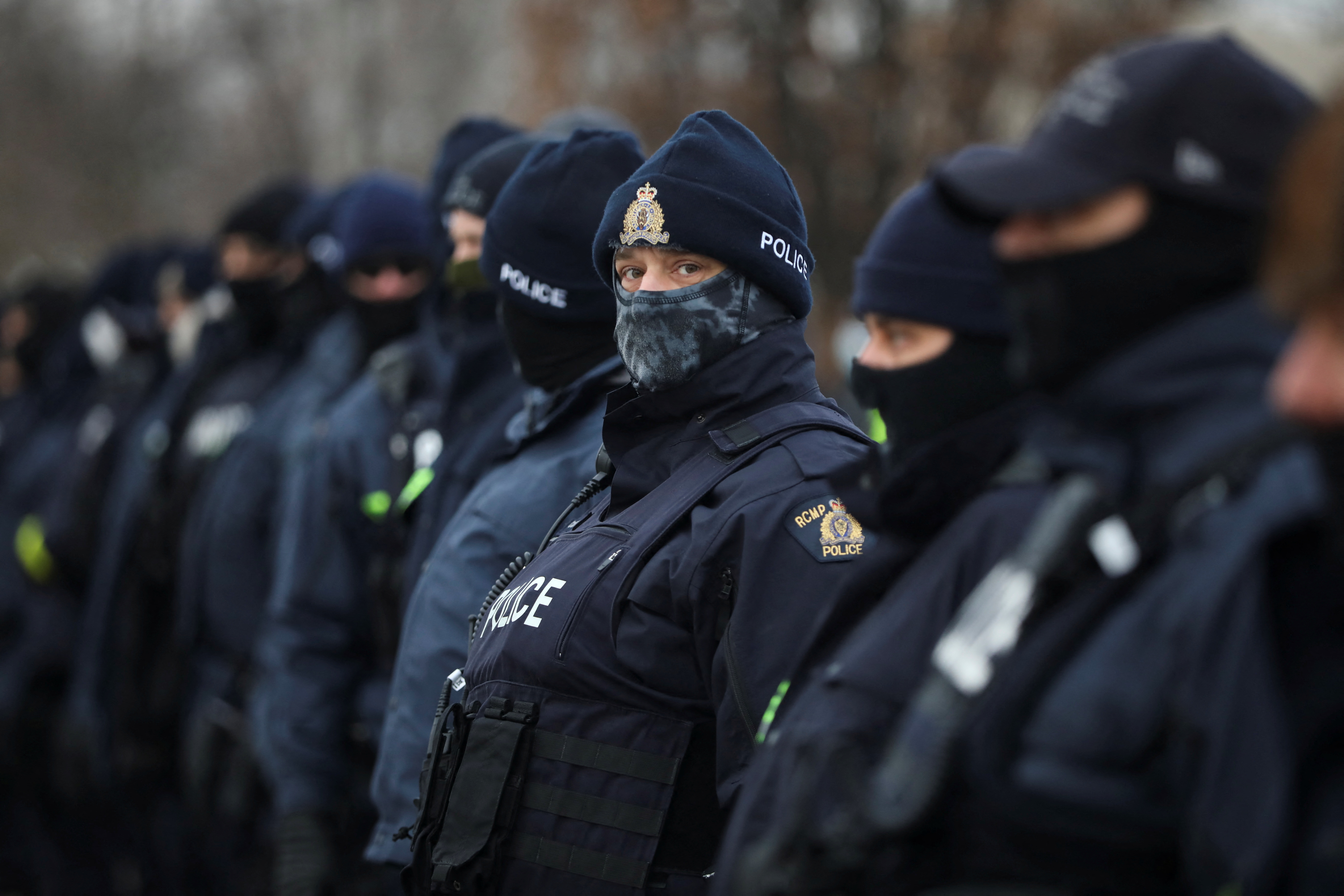Canada’s “freedom convoy,” explained

A few minutes every morning is all you need.
Stay up to date on the world's Headlines and Human Stories. It's fun, it's factual, it's fluff-free.
In recent days, similar protests took place in France, Belgium, Austria and Jerusalem, which were met with varying opposition from their respective governments.
What’s the “freedom convoy?"
- In late January, truck drivers from British Columbia set out en route to Ottawa, Canada’s capital city, to stage a protest.
- These truckers then parked their big rigs in downtown Ottawa and set up camp, blocking traffic and causing disruption in the city by blaring their horns day and night.
- The reason for the protest was Canada’s vaccine mandate for truckers who travel into the United States and then reenter Canada.
- The protest quickly spread to other places in Canada, too – Toronto, Quebec City and a bridge that crosses into the US called Ambassador Bridge.
- More than that, though, they’re inspiring copycat protests around the world.
- In recent days, similar protests took place in France, Belgium, Austria and Jerusalem, which were met with varying opposition from their respective governments.
What do the protesters want?

- Well, their primary demand is to get rid of the vaccine mandate in place for truckers since that’s why they’re there in the first place.
- But considering the size of the protests, there have been a lot of people saying different things, including making the demand that Canadian Prime Minister Justin Trudeau resign.
- These mixed signals have made it a bit tricky to figure out exactly what would get the truckers to leave.
- Options are being floated to solve the problem in other ways, including by police action if necessary.
- And on Monday, Trudeau formally declared a national public order emergency to try and crackdown on the protests.
Does that mean the protests will be broken up by force?

- Well, an order like this has some pretty interesting implications, but not all of them are forceful or even involve the police.
- Some of them do, though, and part of the order would make it illegal to block places like border crossings, giving police the ability to arrest protesters and seize their trucks if necessary.
- But it would also have wider-ranging effects, like requiring insurance companies to stop insuring trucks used in the protests or requiring tow-truck operators to work with police to move the trucks, mobilizing a previously hesitant group of people.
- It also empowers banks to freeze the accounts of protesters, a power that has been used by at least one Canadian bank that froze more than US$1 million collected from a now shut down GoFundMe campaign.
- Trudeau said that the national public order emergency implementation “will be time-limited, geographically targeted" in addition to being “reasonable and proportionate to the threats they are meant to address.” He also said that the government is not calling in the military.
- But, this order is still subject to parliamentary approval, which must be voted on within one week of Trudeau calling for it.
What’s next?
- The first thing for Canada is that invoking the Emergencies Act, which has never been used since the law was passed in 1988, must be approved by the Parliament. An earlier version of the law called the War Measures Act was used only three times in Canadian history.
- The hope would then be that the government could crack down on certain things, such as the blockading of bridges and the crowdfunding of resources, and that the protesters would eventually leave.
- But, this response could take weeks and doesn’t account for the traction this movement has gained in other countries.
- For example, the US Department of Homeland Security is warning that similar protests could block events in the US, such as President Biden’s State of the Union Address on March 1.
You drive the stories at TMS. DM us which headline you want us to explain, or email us.







Comments ()